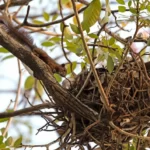Dianthus, a genus of flowering plants renowned for their vibrant and fragrant blooms, has found its place in gardens and landscapes around the world. These plants, commonly known as carnations or pinks, contribute to the visual allure of outdoor spaces. However, for dog owners, the beauty of Dianthus may raise concerns about potential toxicity to their furry companions. In this exploration, we delve into the nature of Dianthus plants and their potential impact on dogs, shedding light on the identification of these flowers and the precautions pet owners should consider to ensure the safety of their canine friends.
Identification of Dianthus
Dianthus plants encompass a diverse range of species, each exhibiting unique characteristics. Typically characterized by slender stems and clusters of colorful, often fragrant flowers, Dianthus can be found in various hues, adding a delightful aesthetic to gardens. Common varieties include carnations, sweet Williams, and pinks. Recognizing Dianthus involves observing the linear, opposite leaves and the distinctive serrated edges that set them apart. These plants thrive in well-drained soil and are commonly encountered in gardens, flower beds, and floral arrangements. As pet owners navigate their surroundings, understanding the distinguishing features of Dianthus becomes crucial in identifying and mitigating potential risks to their canine companions.
Potentially Harmful Compounds
While the allure of Dianthus lies in its visual and olfactory appeal, it is essential for dog owners to be aware of the potentially harmful compounds present in these plants. Dianthus species may contain substances such as saponins and glycosides, which, when ingested by dogs, can lead to adverse health effects. These compounds, though not always present in lethal concentrations, can cause gastrointestinal distress, lethargy, and, in severe cases, more systemic issues. Understanding the specific toxic compounds in Dianthus is crucial for assessing the level of risk they pose to dogs and for implementing effective prevention measures.
Symptoms of Poisoning in Dogs
Identifying the symptoms of Dianthus poisoning in dogs is paramount for prompt intervention and veterinary care. The signs of toxicity can manifest differently depending on the quantity ingested and the individual dog’s size and health. Common symptoms include vomiting, diarrhea, drooling, lethargy, and, in more severe cases, difficulty breathing or an irregular heartbeat. If a dog exhibits any of these signs after potential exposure to Dianthus, it is imperative to seek immediate veterinary attention. Timely recognition and treatment can significantly improve the chances of a positive outcome and prevent the escalation of symptoms associated with Dianthus poisoning in dogs.
Treatment for Dianthus Poisoning
When confronted with a potential case of Dianthus poisoning in a dog, swift and appropriate treatment is crucial. If ingestion is suspected, contacting a veterinarian immediately is paramount. In the veterinary setting, treatment may involve inducing vomiting to remove the ingested plant material from the dog’s system, administering activated charcoal to absorb toxins, and providing supportive care such as intravenous fluids to address dehydration. The specific course of treatment depends on the severity of symptoms and the amount of Dianthus ingested. Pet owners should never attempt to administer home remedies without professional guidance, as this may exacerbate the situation. Veterinary intervention ensures a comprehensive approach to mitigate the effects of Dianthus poisoning and increase the chances of a positive outcome for the affected dog.
Prevention
Preventing Dianthus poisoning in dogs begins with proactive measures to create a safe environment. Dog owners should be diligent in identifying Dianthus plants in their surroundings and take steps to restrict their pets’ access to these potentially harmful blooms. This may involve fencing off garden areas where Dianthus is planted, keeping floral arrangements out of reach, and supervising dogs during outdoor activities. Additionally, cultivating a dog-friendly garden by selecting non-toxic plants and providing alternative areas for exploration can reduce the risk of accidental ingestion. Educating oneself about common toxic plants and promoting awareness among fellow dog owners contributes to a collective effort to ensure the well-being of canine companions. Through responsible pet ownership and preventative measures, the likelihood of Dianthus poisoning in dogs can be significantly minimized.
Other Plants to Watch Out For
While Dianthus is a concern for dog owners, it is essential to broaden the scope of awareness regarding other plants that can pose similar risks to canine companions. Several common plants and flowers found in gardens and households can be toxic to dogs, including lilies, azaleas, and oleander. Understanding the potential hazards associated with these plants enables pet owners to implement comprehensive preventive measures. A thorough knowledge of the flora in and around the home environment empowers dog owners to create a safer space for their pets, minimizing the chances of accidental ingestion and subsequent poisoning.
Conclusion
In conclusion, the beauty of Dianthus comes with a responsibility for dog owners to be aware of the potential risks it poses to their furry friends. The identification of Dianthus, understanding its potentially harmful compounds, recognizing symptoms of poisoning, and knowing the appropriate treatment measures are crucial components of responsible pet ownership. By extending this awareness to other toxic plants and implementing preventative strategies, dog owners can create an environment that prioritizes the well-being of their canine companions. Through ongoing education and vigilance, the risks associated with Dianthus and other toxic plants can be effectively mitigated, ensuring a safe and harmonious living space for dogs and their owners alike.




